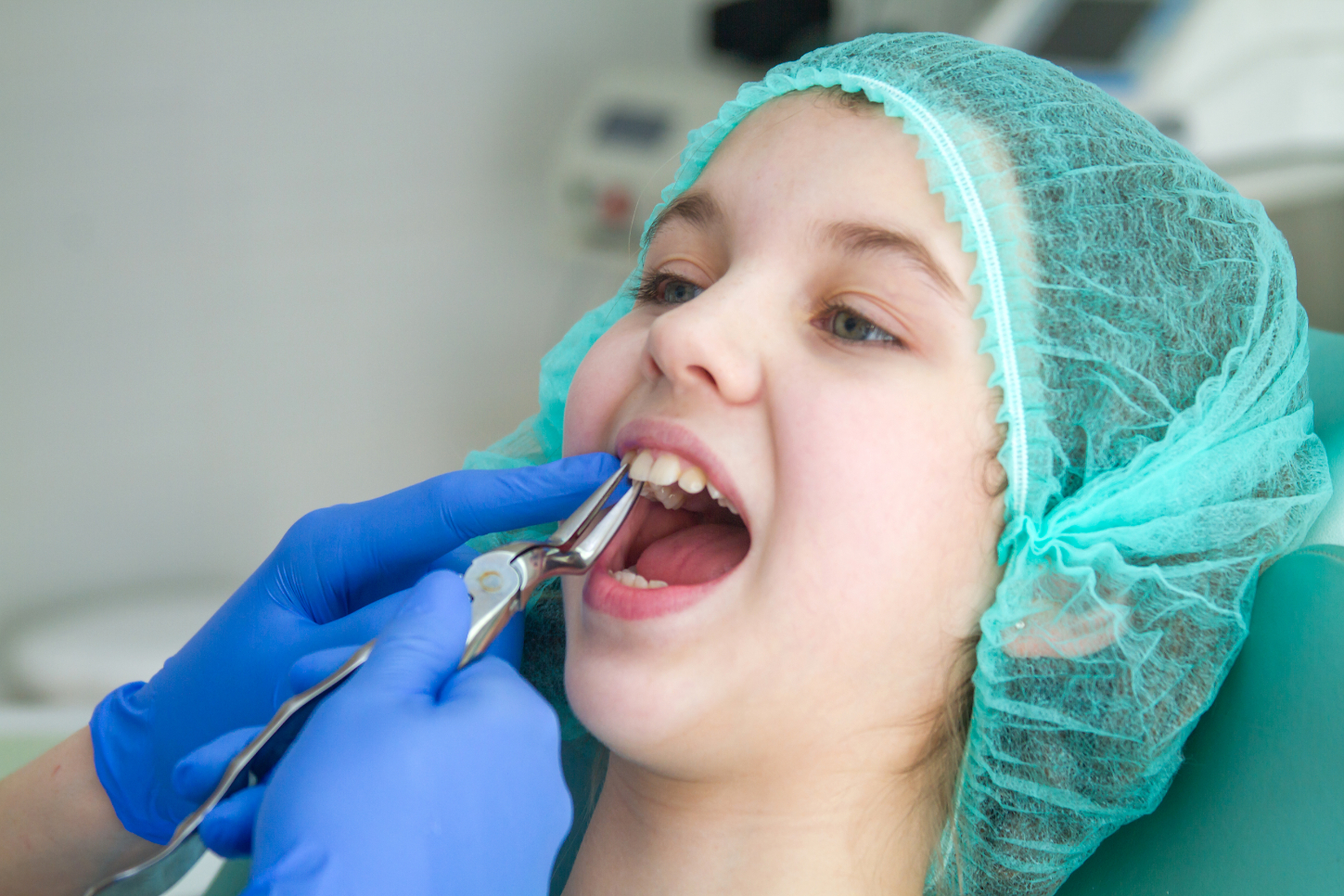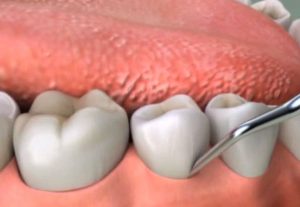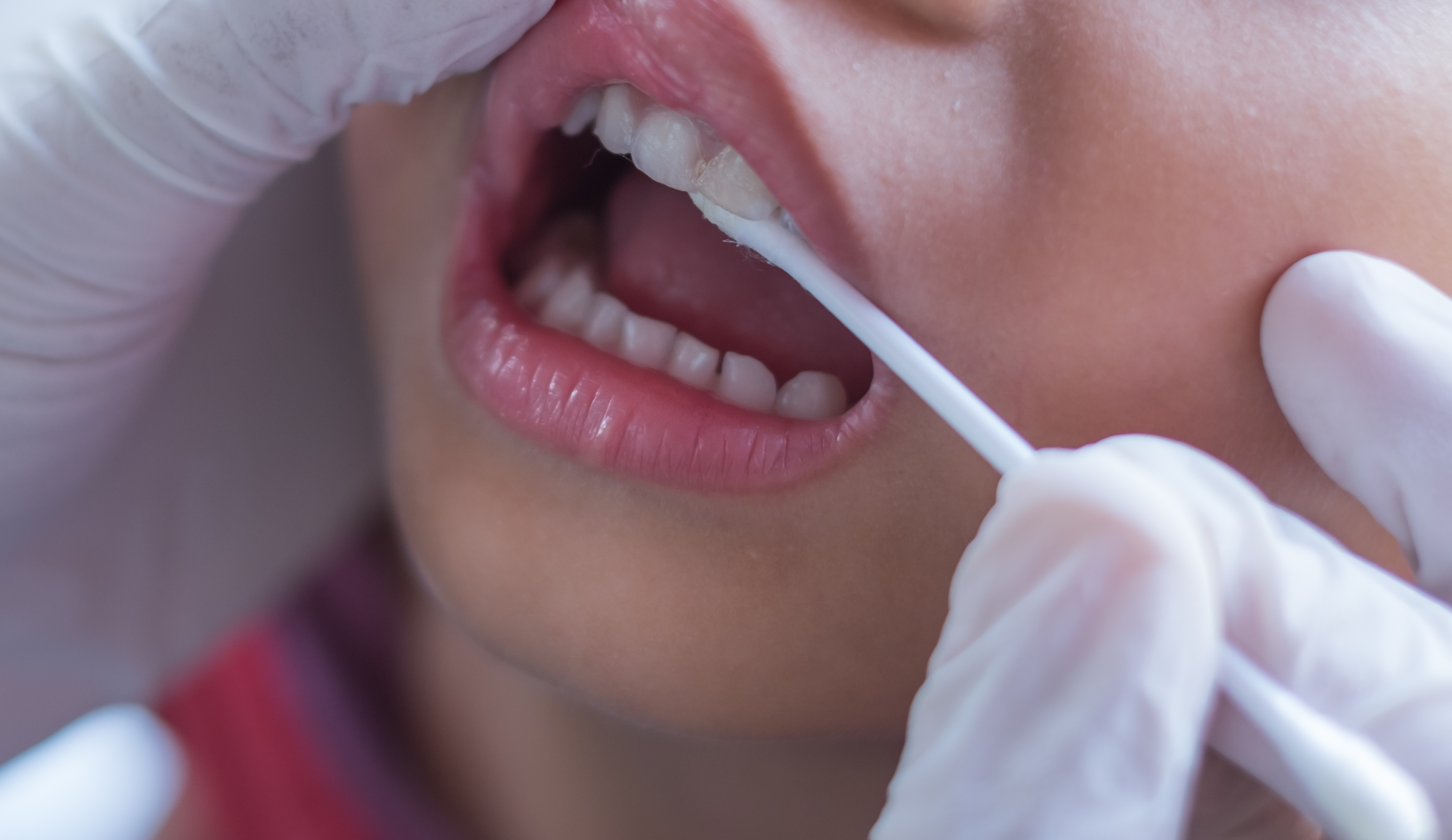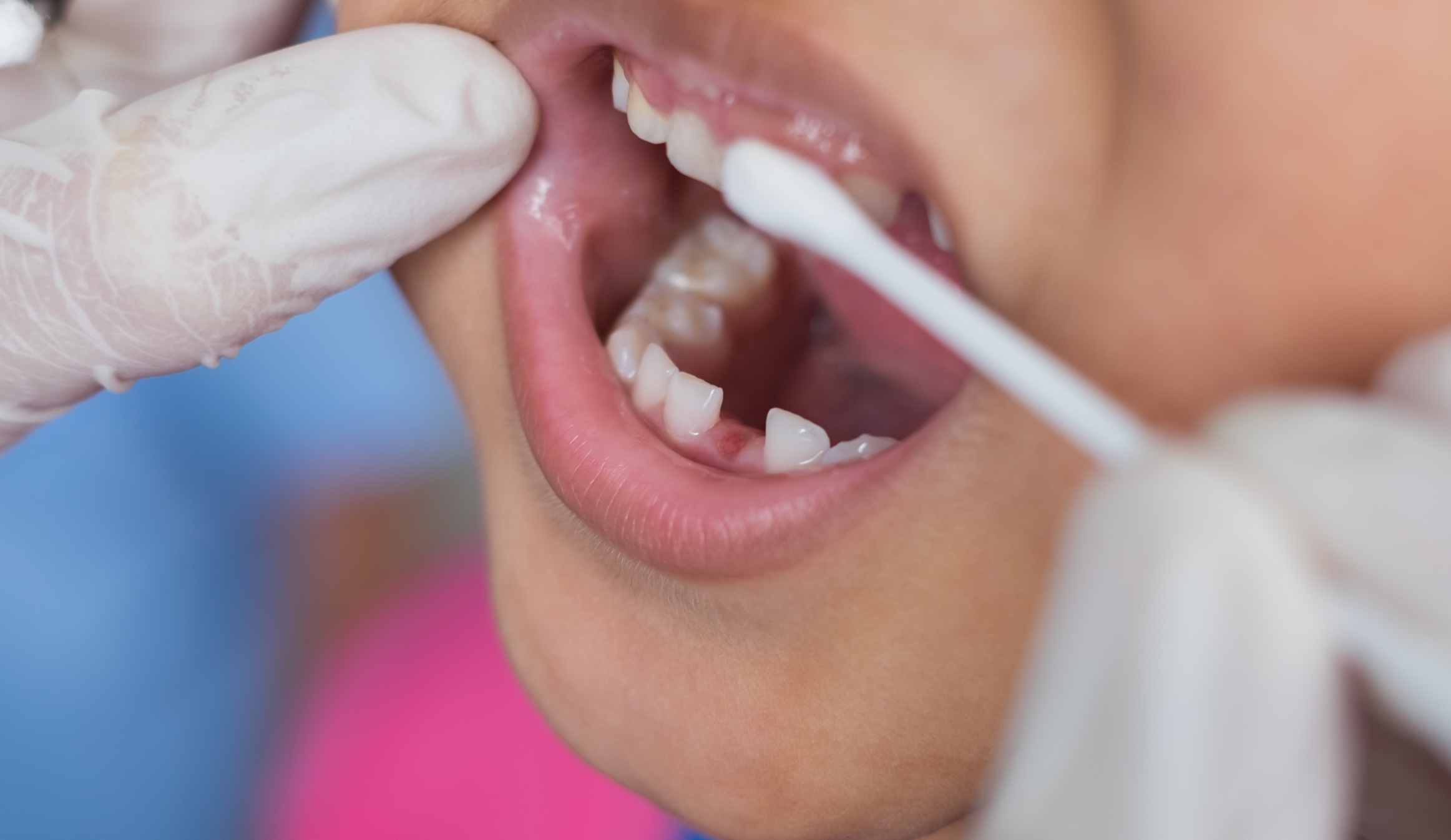- Children's Dentistry
- Dental Filling
- Dentures
- Examination and Diagnosis
- Extraction
- Fluoride Treatment
- Gum Treatment
- Mouth Guards
- Root Canal Treatment
- Scaling & Polishing
Children's Dentistry
We believe that dentistry for children should be fun and pleasant! Our kid-friendly dentists love children and are passionate about giving them a head start by helping them cultivate good dental habits from a young.
How old should my child be for a visit to the dentist?
We recommend that children begin visiting the kid dentist no later than the age of 2 years. Ideally, the first visit is aimed at introducing each toddler to the dental environment in a positive and non-threatening way. We use a Tell-Show-Do technique, which builds up their trust and confidence before proceeding with dental treatments if required.
Read how you can help your child to have a positive dental visit, or visit our FAQ page for answers to common questions about bringing your child to the dentist.
Our aim is to achieve optimal dental care, prevention of tooth decay, and early treatment of oral disease. As such, we educate children, parents, and caregivers on how to maintain oral hygiene to keep dental cavities at bay!
For apprehensive patients, sedation with nitrous oxide (also known as laughing gas) is an option to help them feel more relaxed and at ease during dental treatments. Read more about nitrous oxide sedation

Make an Appointment
Dental Filling
A dental filling (tooth filling) procedure is done to restore form and function to a damaged tooth. It is most commonly used to treat cavities but can also be used to repair broken teeth or teeth which have worn down over time.
When tooth decay destroys part of a tooth, it could expose inner nerves, compromise the tooth’s structural integrity or become a site of continued infection. Even if the dentist removes the decay from inside the cavity, the hole itself would present a problem for the tooth. By filling in the hole, dentists restore full functionality to a damaged tooth.

Materials used for fillings include gold, porcelain, amalgam (an alloy of mercury, silver, copper, tin and sometimes zinc) and composite resin (tooth-coloured fillings). Tooth-coloured fillings have become increasingly popular in recent years. They are good alternatives to traditional metal fillings and are chosen for their strength, durability and natural-looking appearance.

Procedure
A dental filling procedure follows this sequence:
- Decay removal from the affected tooth
- Dental cavity (tooth cavity) is cleaned and prepared for restoration
- Tooth restoration and shaping
- Bite check to ensure a comfortable and aligned bite
- Adjustment(s) if necessary
Most dental fillings can be done without local anaesthesia. For deep cavities or hypersensitive teeth, you may be given topical anaesthetic to make the treatment more comfortable.
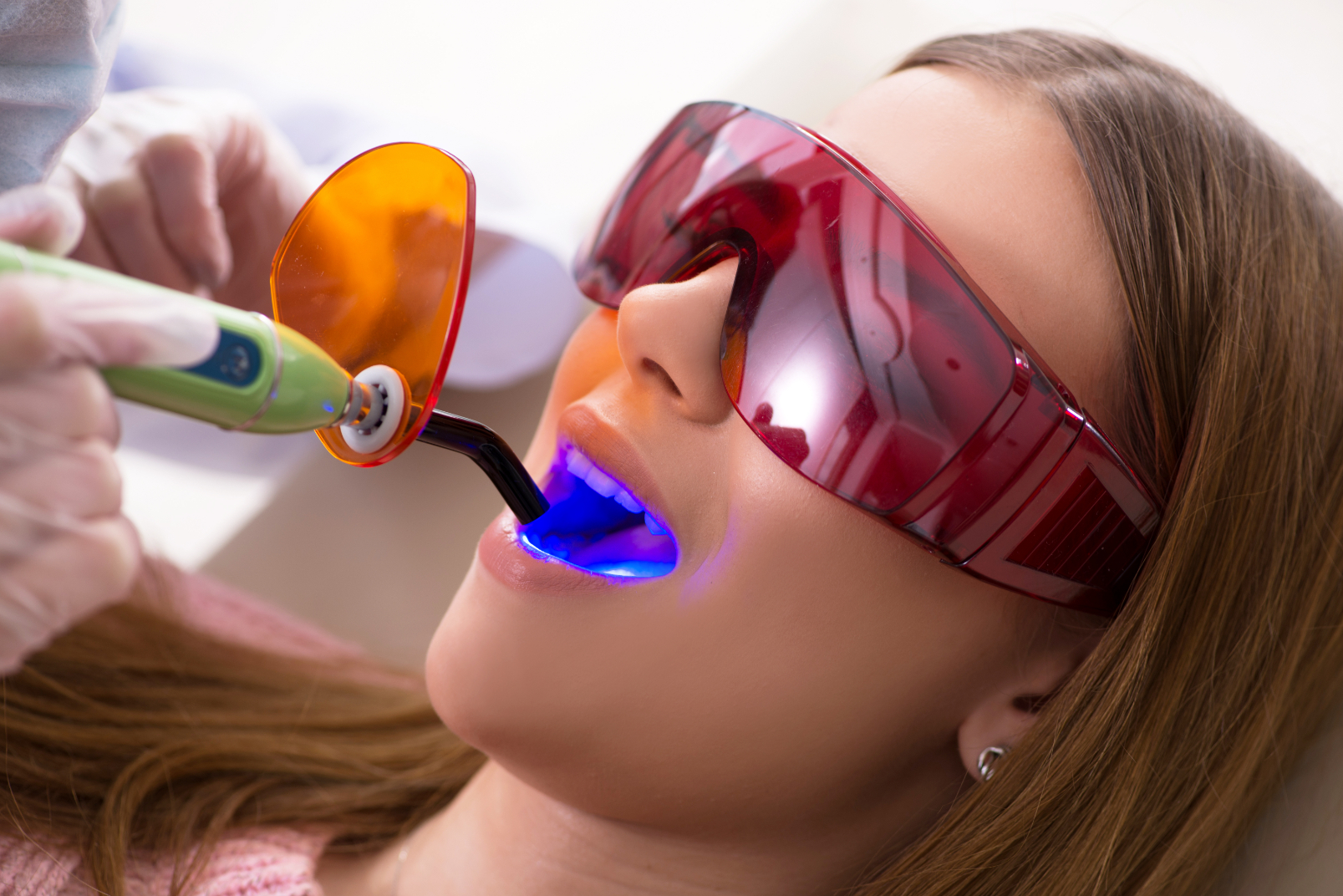
After a dental filling procedure, you may sometimes experience sensitivity and slight discomfort but these symptoms should subside within a week. If there is continued discomfort, see your dentist for a review. Tooth fillings usually last for many years before needing replacement. However, if you clench or grind your teeth, you may need to have your tooth fillings replaced sooner.
A dental filling is a safe and common dental procedure to ensure that a minor dental problem is fixed before it escalates into a more serious one.
Make an Appointment
Dentures
Dentures are removable replacements for missing teeth. The denture base can be made of acrylic, cobalt chrome metal or nylon base. This houses artificial teeth which mimic the look and function of a full set of teeth.
Types of dentures available
- Acrylic dentures – The most commonly used option due to its mouldability and cost-effectiveness. Acrylic dentures can be altered, so adjustments can be made to adapt to changes in your mouth over time more easily than metal dentures.
- Cobalt chrome dentures – These have a strong metal base, so they are much less bulky and more fracture-resistant than acrylic-based dentures. Metal clasps fasten the dentures to existing natural teeth, making them sturdier and more comfortable. However, they are more expensive than acrylic dentures.
- Flexible dentures – Flexible dentures are not brittle and are unlikely to shatter if dropped. Comfort is a major benefit, and patients often find chewing easier than when wearing regular dentures. They also have no visible metal clasps or hooks as may be the case for acrylic or chrome dentures.
 Acrylic dentures
Acrylic dentures Cobalt Chrome dentures
Cobalt Chrome dentures Flexible Denture
Flexible Denture Partial denture
Partial denture
Whatever type of denture you choose, it will take you some time to get used to wearing it. After an adjustment period, they should begin to feel more comfortable and natural. Removable full or partial dentures are intended for wear during the day and should be removed at night and soaked in a denture cleaning solution.
Advantages of dentures
Dentures are lower in cost compared to other teeth replacement options and can be fabricated in a relatively short time. They are easy to remove for cleaning and are easier to repair than other teeth replacement options.
Disadvantages
Dentures take a while to get used to. The metal clasps which help to hold the denture in the mouth may be visible when speaking or smiling. You may encounter speech issues in the first few days. Full upper dentures cover the upper palate and will affect your sense of taste. Besides, you can at best chew at 15-23% of the efficiency of a person using their natural teeth.
You need to remove your dentures every night and be disciplined in keeping them clean. Failing to do so can lead to mouth irritation, sores, tooth decay, gum disease and further tooth or bone loss. Your mouth is constantly changing in shape; gums recede and bone loss occurs over time where there is no tooth or fixture to secure it. Dentures need to be replaced approximately every five years to achieve a good fit.
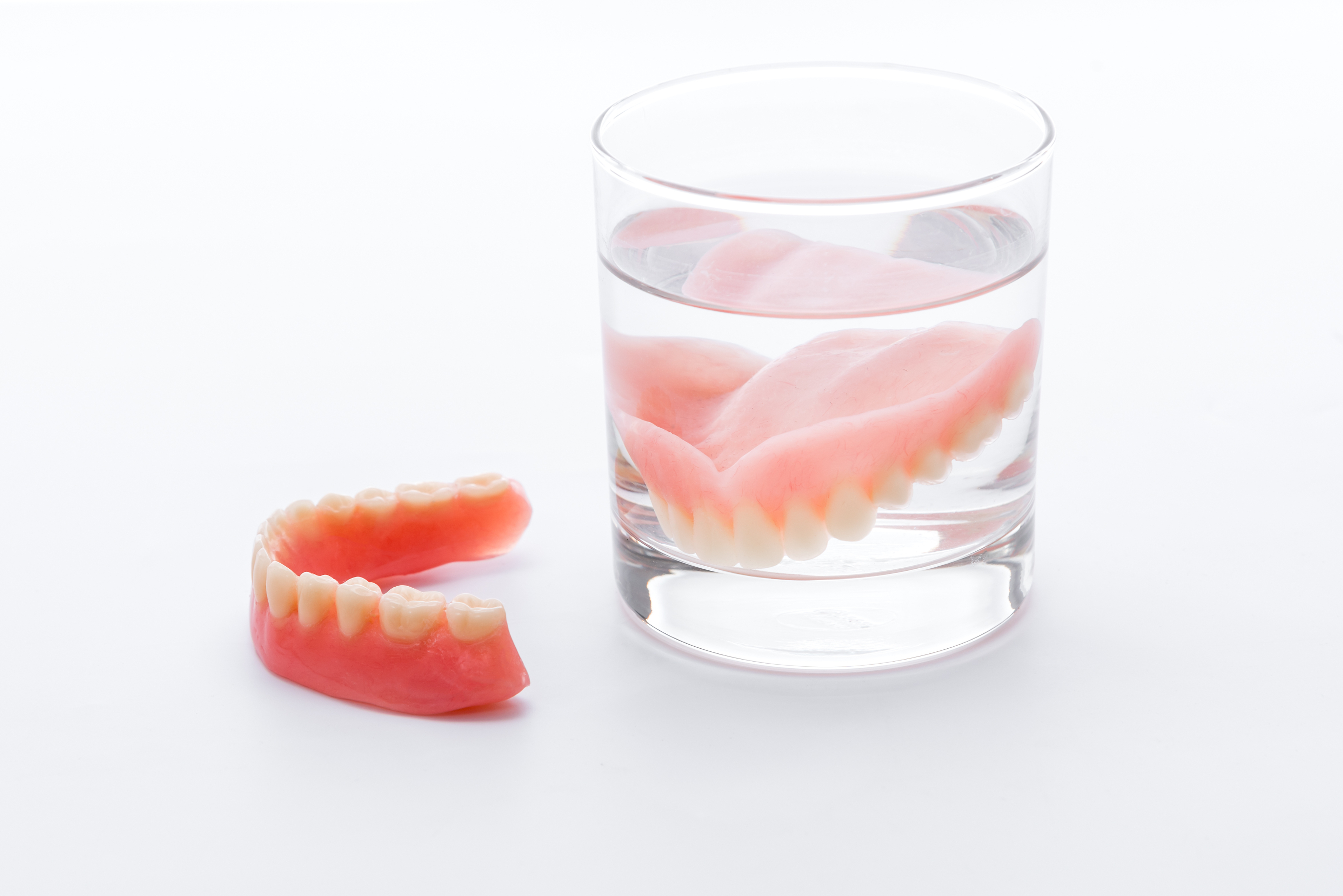
Procedure
The process of getting partial or full dentures takes about four to six weeks. It involves several appointments and follows these steps:
- Primary Impression: Initial impressions of your jaws and teeth are taken.
- Secondary Impression: Measurements are taken. The denture is designed and the shade is selected.
- Denture Try-in: A wax denture is fitted so you can make any adjustments to the colour, shape and fit before the permanent dentures are made.
- Denture Issue: The final denture is done and fitted in your mouth. Further slight adjustments may be necessary.
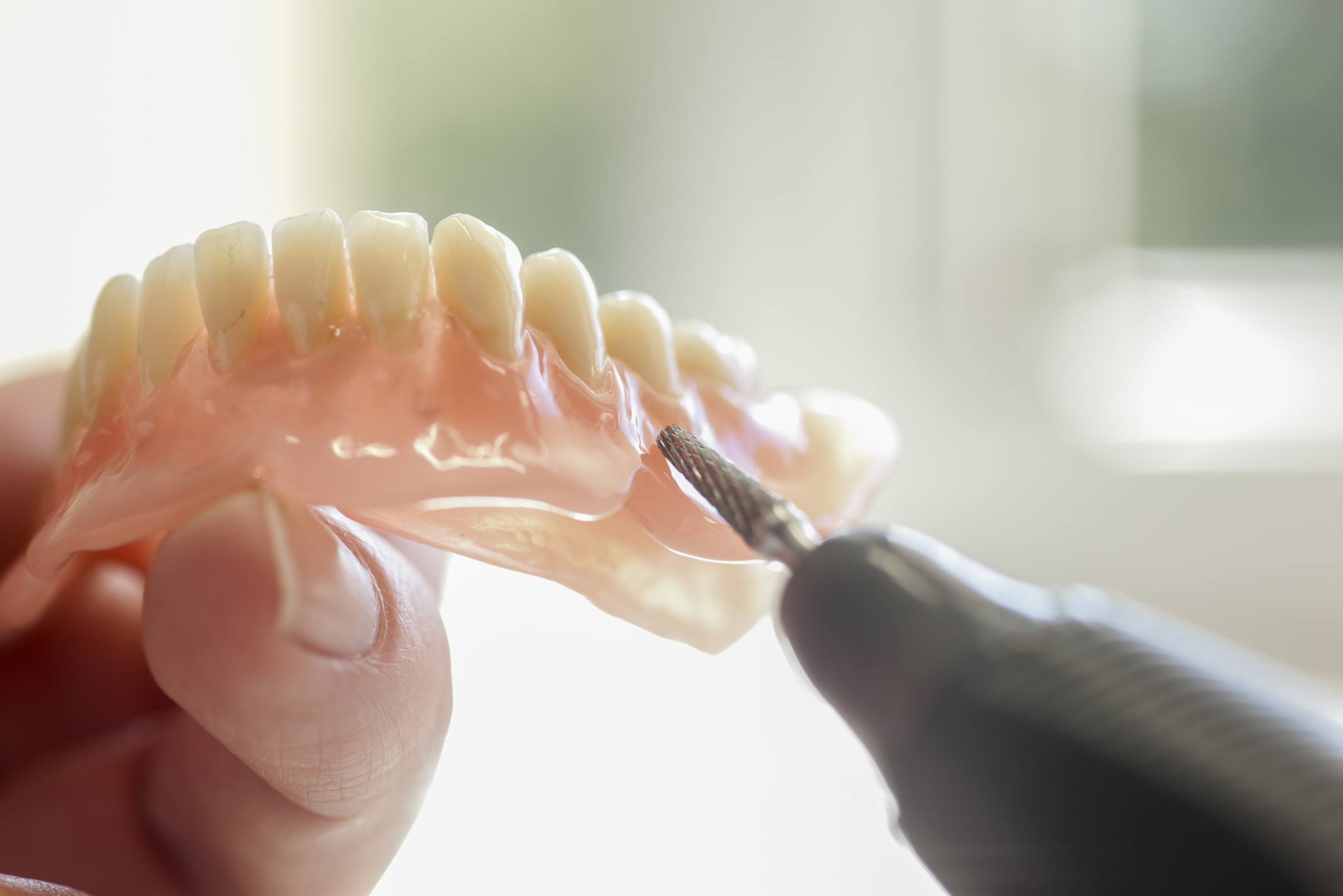
When you first receive your dentures, you will need some time to get used to them. Some patients may need further adjustments to the denture over the first 3 months.
Other Replacement Options for Missing Teeth
Dentures are a good teeth replacement option but have become less popular over the years due to the inconvenience of maintenance required. Other replacement options like dental implants and bridges have become more widely chosen. For more details, check out the relevant pages.
Make an Appointment
Examination and Diagnosis
Before we start examining your mouth, we hope to first have a friendly chat with you. We want you to tell us your dental journey thus far. We believe that listening to you helps us become better dentists. We are better able to appreciate your needs and concerns and to focus on what you want out of your dental visit.
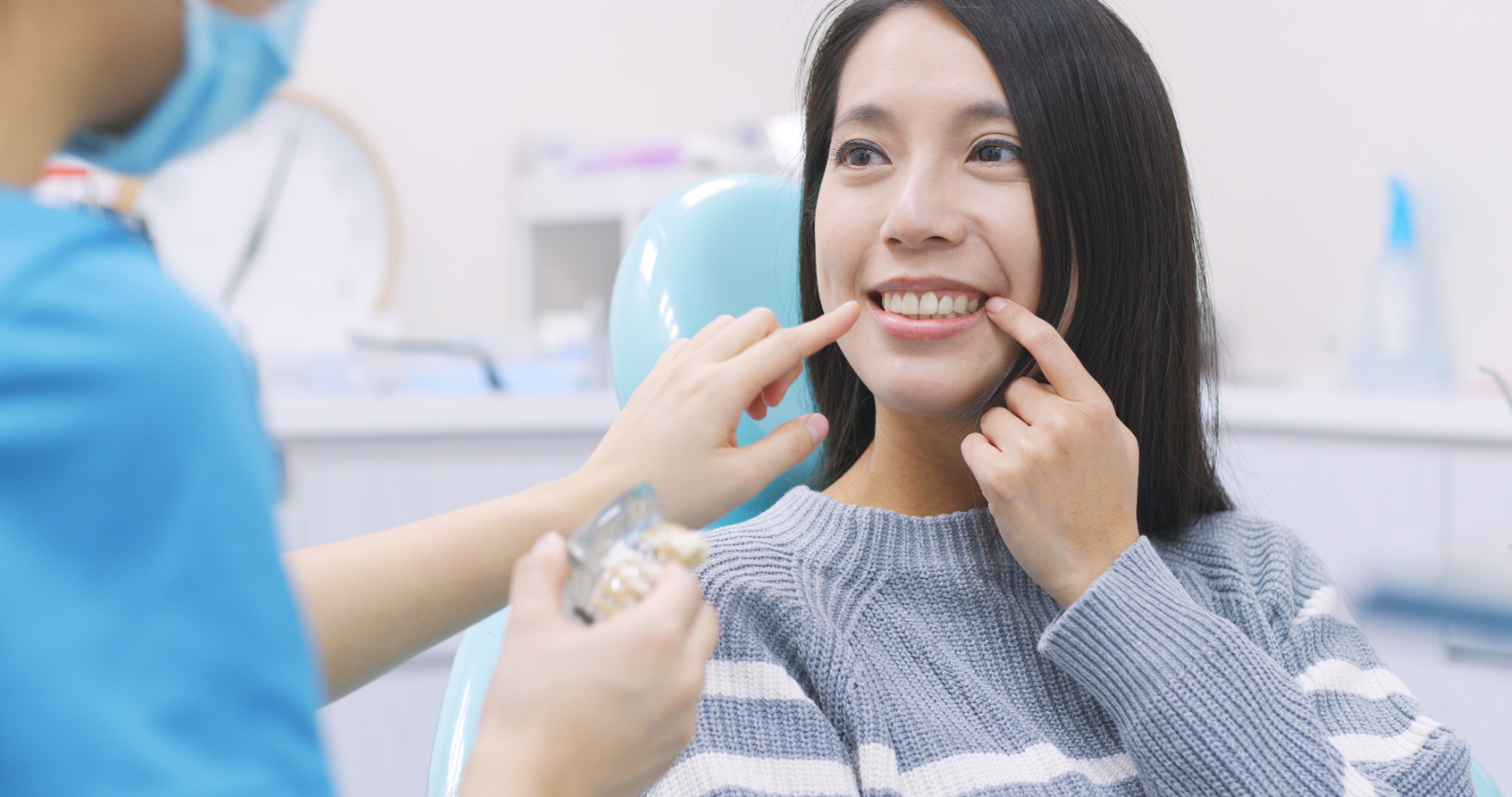
What can I expect for my dental check-up?
Examination and Diagnosis usually takes about 40 mins to an hour. We will examine your teeth, gums and oral cavity in detail. For cooperative adolescents and adult patients, multiple macro photos of your teeth are taken using our digital SLR cameras. These images are then displayed on our large screens so you can visualize your teeth and gums. You will be educated about the current state of your dental health. We will focus on problem areas which concern you. We will also let you know if we spot any other dental problems. Treatment options will be explored and discussed in as much detail as you require. We will be guided by you.
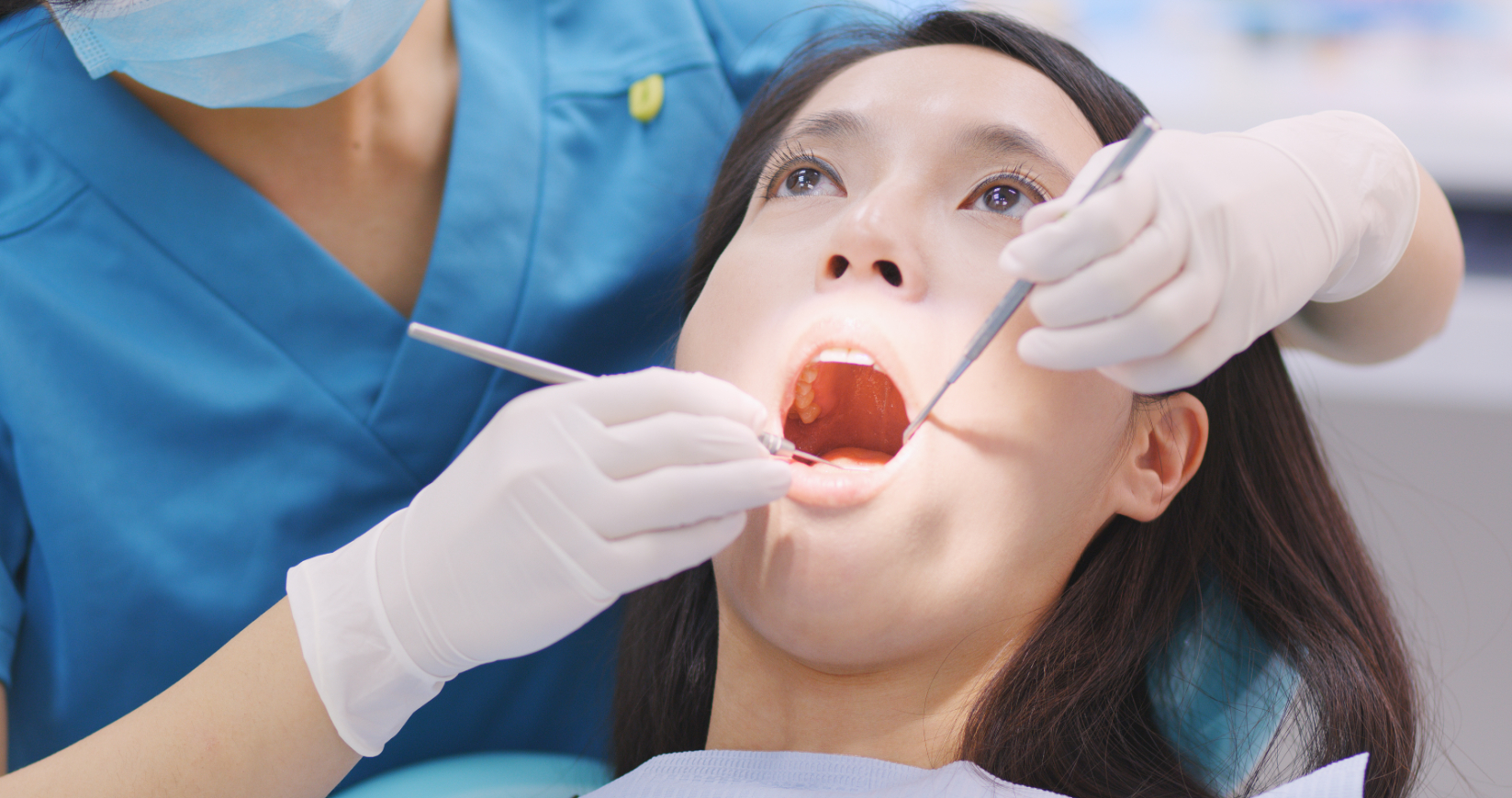
Oral cancer has the best prognosis if detected early. As such, our dentists will perform a complimentary Oral Cancer Screening as part of every Examination and Diagnosis.
Make an Appointment
Extraction
Dental extraction (tooth extraction) is the removal of a tooth from its socket in the jaw. Extractions are performed for a wide variety of reasons. Most commonly, teeth are removed if they become unsalvageable through tooth decay, periodontal disease or dental trauma. Sometimes, teeth are removed due to overcrowding in the jaw. In young children, milk teeth usually loosen and fall out as permanent teeth erupt. Some parents prefer to have such teeth removed in a clean and painless manner in the dental office.
For adolescent and adult tooth extractions, the dentist may take an x-ray to determine the best way to extract the tooth. Some teeth are difficult to remove due to reasons such as the tooth’s position, integrity, shape of its roots and density of the surrounding bone.
Generally, there are two types of extractions:
1) Straightforward extraction where the tooth is loosened with an elevator and then removed with forceps. Local anaesthesia given will numb the area around your tooth so you will feel only pressure and not pain during the procedure.
2) Surgical extraction is a more complex procedure, which is needed if a tooth has broken off at the gum line or has not erupted fully in the mouth. The dentist will make a small incision into the gums to surgically remove the broken tooth or impacted wisdom tooth. After the tooth is removed, stitches are placed and a review is usually scheduled 1-2 weeks later. This surgical procedure can be done under local anaesthesia . General anaesthesia can be arranged if preferred.
Make an Appointment
Fluoride Treatment
Plaque bacteria use the sugar in our diet to form acid. The acid constantly attacks enamel, the outermost layer of our teeth. It is no wonder that everyday, we lose minerals from our teeth.
When fluoride is absorbed into the enamel layer, it helps to repair the tooth surface by replenishing the lost calcium and phosphorous. This helps to keep our teeth hard. This process is called remineralization. Therefore, the application of fluoride strengthens teeth surfaces, making them more resistant to tooth decay. In fact, research has shown that fluoride can even help to reverse early tooth decay, before cavities develop.
Fluoride is a natural mineral found in many foods. Low concentrations of fluoride can also be found in our local tap water, fluoridated toothpaste and mouthwash at home. Fluoride treatments done in the dental clinic allow for a much higher concentration of fluoride to be applied to your teeth. This can benefit individuals with the following conditions:
- Teeth susceptible to decay
- Poor oral hygiene
- Dry mouth
- Children
- Individuals with braces
- Individuals with dental crowns or bridges
- Individuals whose diets are rich in sugars and acidic drinks and
- Frequent snackers
Procedure
Fluoride treatment is best done when the tooth surface is clean. It may be performed immediately after scaling and polishing or on its own for targeted spots in the mouth. Only one appointment is required for fluoride treatment. Fluoride may be in the form of a gel, foam, or varnish. Typically, it is applied with a brush or placed in a tray that is held in the mouth for several minutes. After the treatment, you will be asked not to rinse, eat, or drink for at least 30 minutes. This is to allow the teeth to absorb fluoride, allowing the repair of microscopic cavities.
Safe and affordable, fluoride treatment helps you maintain good dental health. Depending on your
oral health status, fluoride treatments may be recommended every 3, 6, or 12 months.
Make an Appointment
Gum Treatment
Gum disease (periodontal disease) destroys gums and even the bone tissue which surround and support the teeth. Left untreated, it will eventually lead to tooth loss.
What are the stages of gum disease?
There are three stages of gum disease:
- Gingivitis
The earliest stage of gum disease, this refers to inflammation of the gums, caused by dental plaque build-up at the gum line. Gums may appear red, swollen and some bleeding may occur during brushing and flossing. At this stage, gum disease can be reversed with treatment, since the bone and connective tissue that hold the teeth in place are not yet affected.
- Periodontitis
At this stage, the supporting bone and connective tissue that hold the teeth in place are irreversibly damaged. The gums form deep pockets below the gum line, which encourages penetration and growth of plaque. Gum treatment and improved oral hygiene techniques can usually help prevent further damage to the gum tissue, supporting tissue and bone. This means that gum health can be improved and maintained but bone loss that has occurred cannot be restored naturally.
- Advanced Periodontitis
In this advanced stage of gum disease, the supporting bone and connective tissue of the teeth have been destroyed, causing teeth to shift or loosen. This can affect biting, chewing and speech. If gum treatment cannot save the affected teeth, they may need to be extracted. The dentist will provide replacement options if teeth are removed. The gums still need to be treated before any teeth can be replaced successfully and optimally.
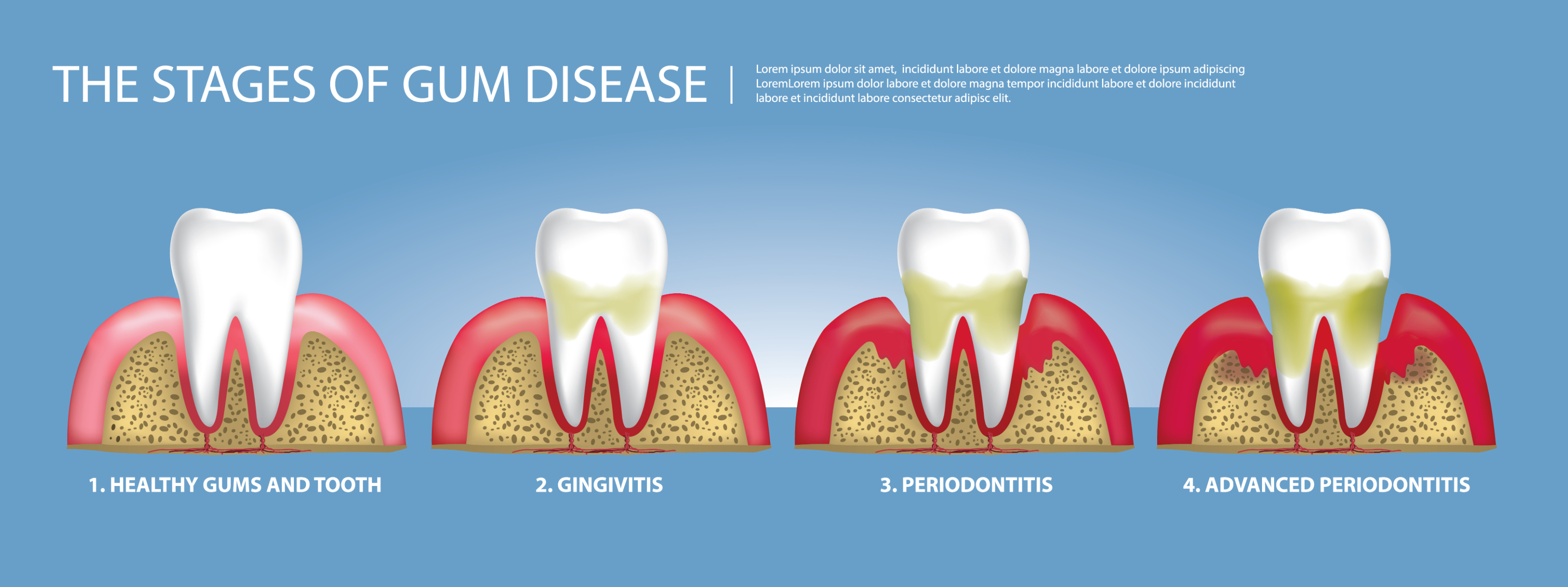
Procedure
Gum Curettage is the treatment for moderate gum disease. The procedure involves using an ultrasonic scaler to remove plaque, tartar and food debris above and below the gum line. Special instruments are then used to manually scale around the tooth and root surfaces to make them smooth and disease-free. Gum treatments are usually done over a few visits as the work is extensive and time-consuming. Local anaesthetic is often administered.
Light-Activated Disinfection
Our clinic offers LAD (light-activated disinfection) or laser gum curettage which make almost painless single-session gum treatment possible. Moreover, these methods destroy bacteria in deep gum pockets, promoting faster and better recovery.
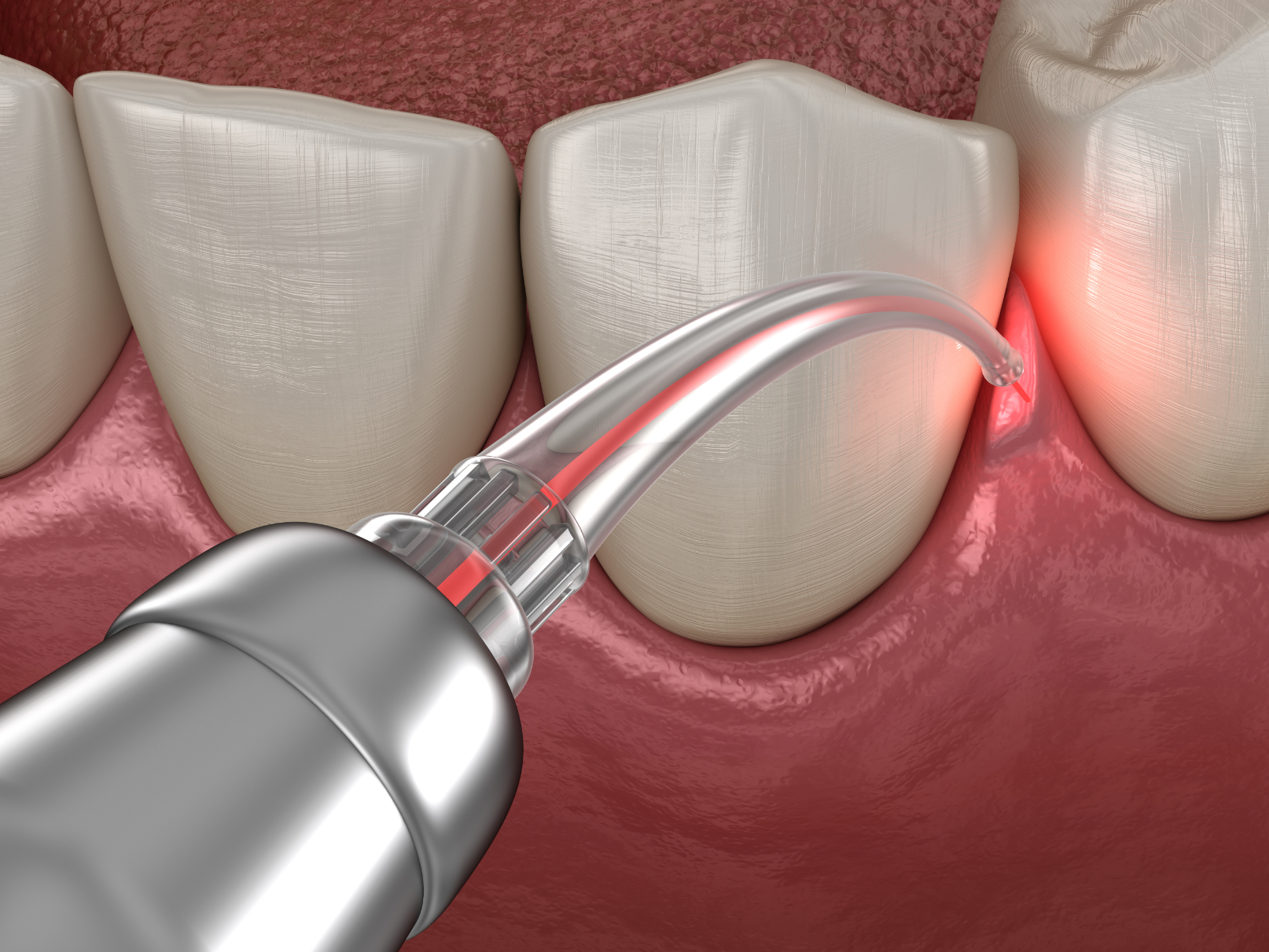
Post Treatment Care
The most critical factor for successful resolution of gum disease is strict adherence to post-treatment oral hygiene and home care routines. Negligence leads to recurrence of gum disease. Routine cleaning by the dental professional every 4 to 6 months is also crucial in preventing bacterial reaccumulation.
Make an Appointment
Mouth Guards
A mouth guard is a thin, horseshoe-shaped dental accessory that is worn over the teeth to protect them against teeth grinding at night and during sports. Mouth guards are created from hard, mouldable plastics which fit over the upper and/or lower teeth, creating a cushion between them and hence absorbing the impact of the grinding or clenching.
Mouth guards are commonly prescribed as :
-
- Night guards : To protect the teeth of bruxers (people who grind their teeth during sleep) or
-
- Sports mouth guards : To protect teeth for contact sports athletes.
- Sports mouth guards : To protect teeth for contact sports athletes.
Night guards help to reduce enamel damage, jaw joint inflammation and irritation to the gums. Sports guards primarily act as shock absorbers. They protect your teeth and jaw joints from trauma that can be sustained while playing sports, which is a crucial component of concussion prevention.
For mouth guards to be effective, they need to be custom-made for each individual. A well-fitted mouth guard is essential in providing maximum protection from traumatic force as it will remain securely in place during sleep or sports activity. They should also feel relatively comfortable and not interfere with breathing or speech.
If you are wearing a mouth guard for the first time, you will need time to adjust to the unfamiliar device. During the initial adjustment period, the mouth guard may feel bulky and the teeth and gums may feel sore. You can also expect to salivate more. Once you get used to wearing the mouth guard, these symptoms will subside.
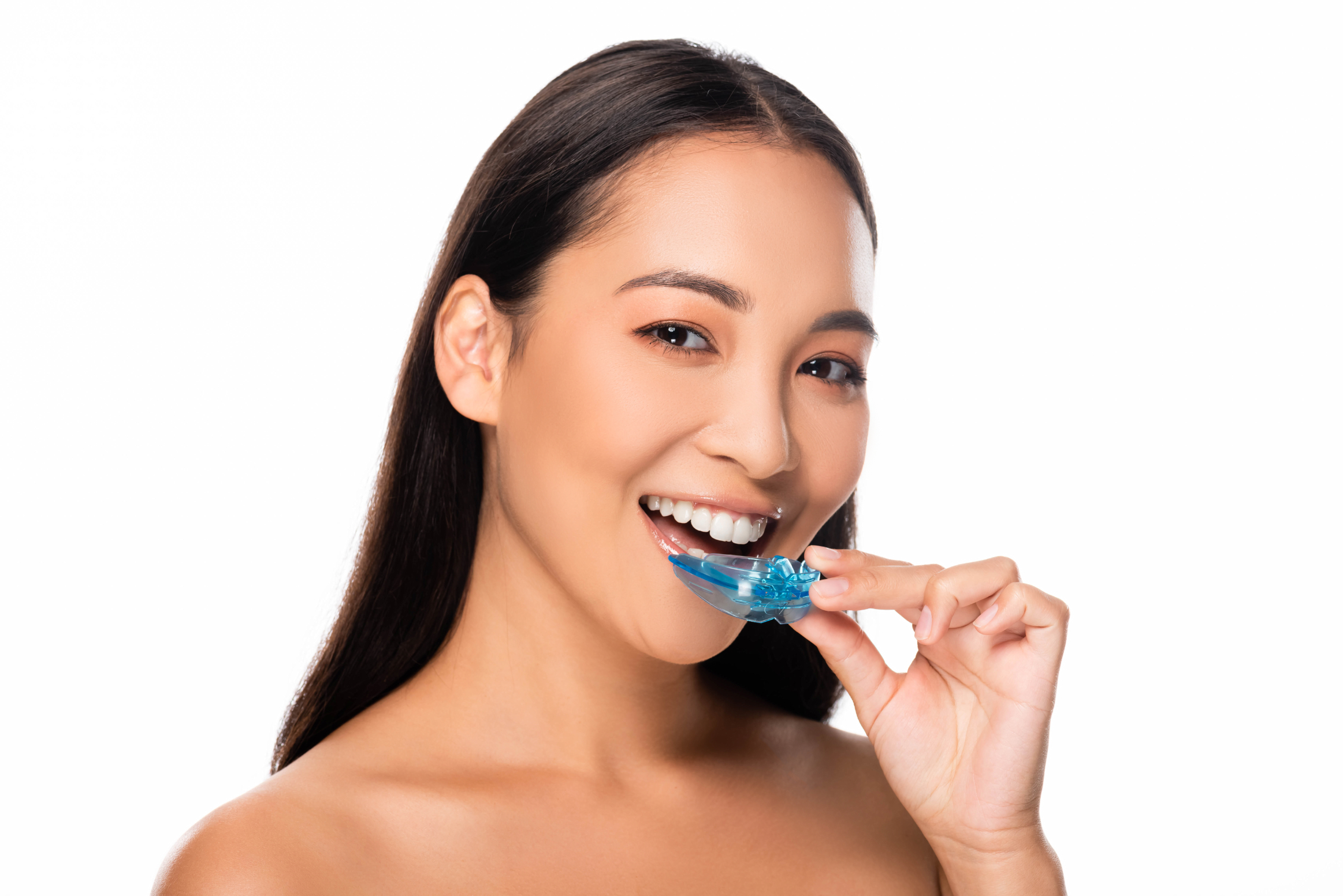
How is a custom mouth guard made?
Typically, it takes two dental appointments to have your mouth guard issued. During the first visit, the dentist takes a bite record and impression of your teeth. These records are then sent to a dental laboratory to get the mouth guard fabricated. On the second appointment, the mouth guard is fitted into your mouth and checks are done to ensure proper teeth alignment. Adjustments are made if needed. You will be shown how to insert and remove the mouth guard properly. You will also be taught how to maintain it. Mouth guards generally last between 1 to 3 years depending on the usage and quality of maintenance.
Make an Appointment
Root Canal Treatment
Our teeth have a core of blood vessels and nerves at their center. This living tissue is called the pulp and is in a space called the root canal. The number of root canals depends on how far back the tooth is in your mouth. Front teeth often have just one root canal, while back teeth may have 3 or more. If your tooth is injured or has severe decay, the pulp can be damaged and the blood vessels may die. Your tooth “dies”, putting it at risk of getting infected because it is no longer protected by your immune system.
There are a number of ways that a tooth’s pulp can be damaged. These include:
- Decay
- Gum disease and
- Injury.
Without treatment, unbearable pain and swelling can occur.
Root canal treatment involves cleaning and filling the entire root canal of a tooth. This is a conservative treatment option as opposed to extraction of the entire tooth. The suitability and success rate of the root canal procedure depends on the presenting condition of the remaining tooth structure and the extent of infection.
During the root canal procedure, the infected and damaged pulp of the tooth is removed. This process inevitably results in tooth structure loss and a high risk of fracture. A dental crown must be used to seal the entire tooth, thereby protecting it and restoring functionality. The dental crown also acts as a protective barrier against bacteria and debris, ensuring longevity of the root canal treated tooth.
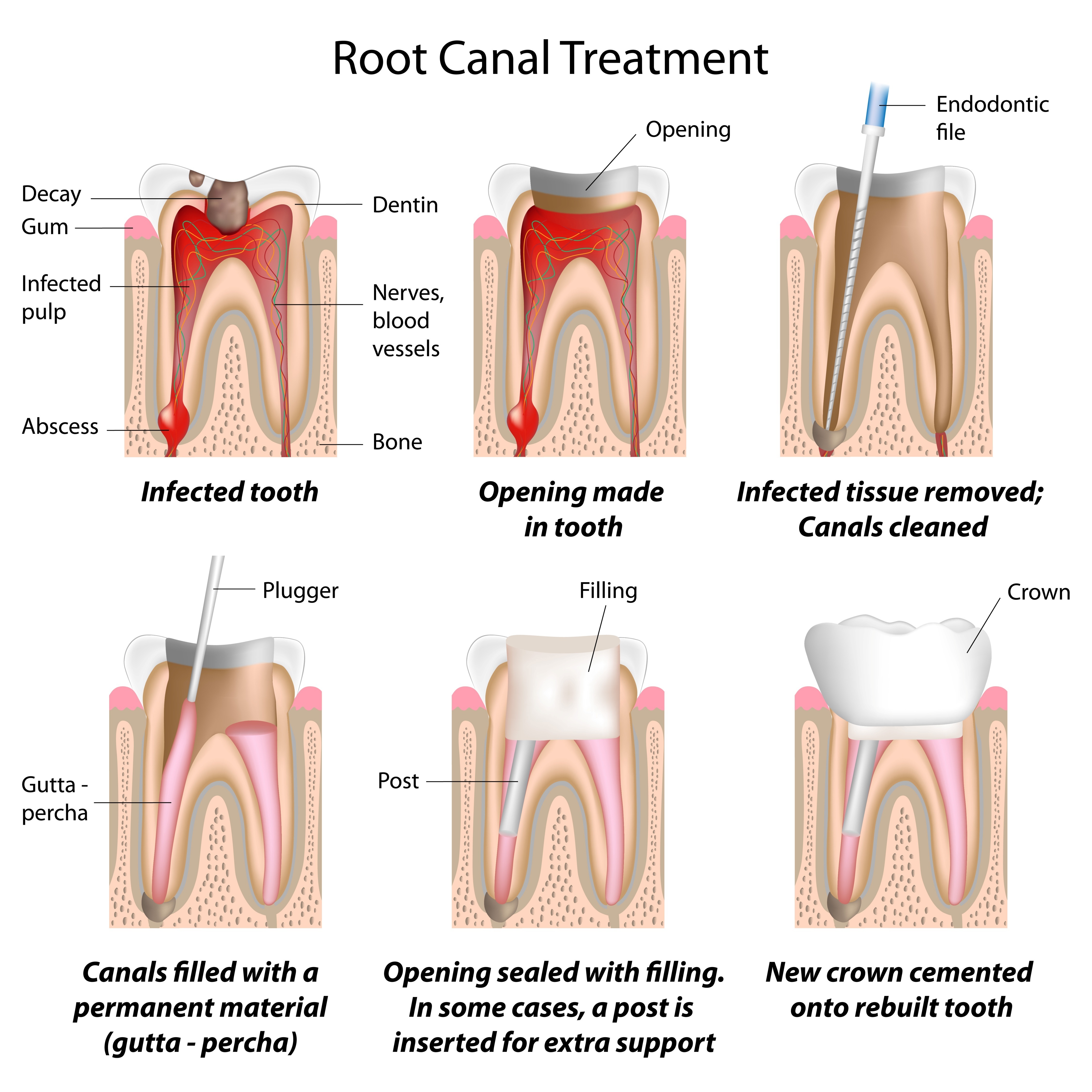
Make an Appointment
Scaling & Polishing
Twice daily brushing and daily flossing is vital for good oral health. However, it cannot remove stubborn or hardened debris from your teeth. Professional scaling and polishing removes external stains, dental plaque and tartar from your teeth while simultaneously polishing tooth surfaces.
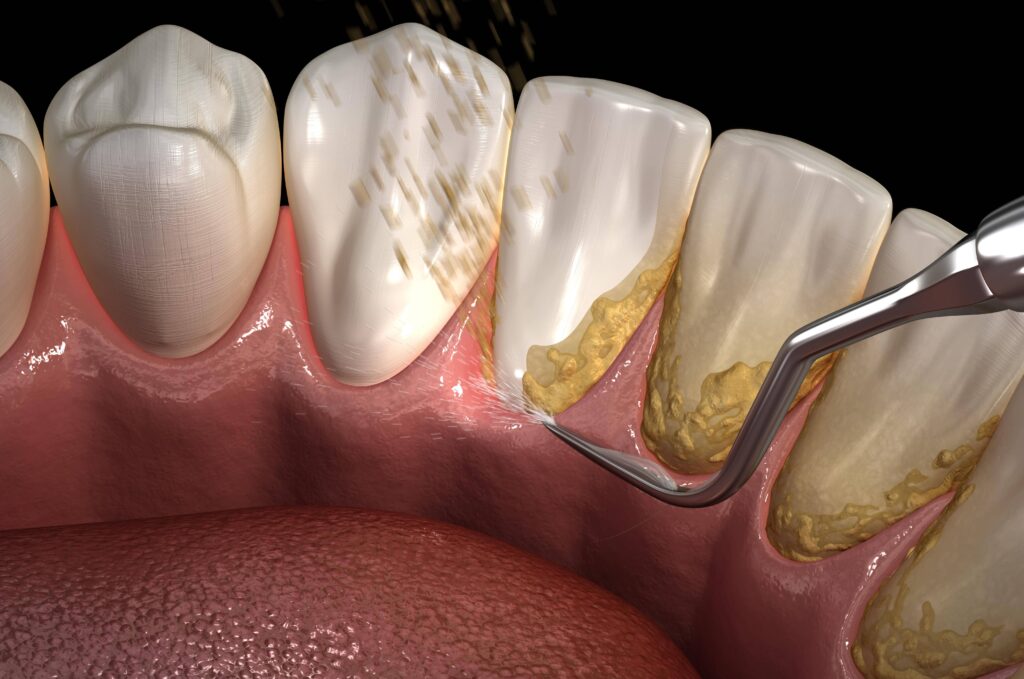
Scaling
Plaque is found on tooth surfaces. It is a soft, sticky film of bacteria which ranges from colorless to pale yellow in appearance. When plaque is not removed, it will harden into tartar within 24 to 72 hours. Tartar forms above and below the gum line, eventually leading to gum disease. Strongly bonded to teeth, tartar is impossible to remove by brushing or flossing. It can only be removed by a dental professional. We prefer to use ultrasonic scalers which use ultrasonic vibrations to gently remove calculus deposits from teeth gently and more effectively. Hand scalers can be used to manually scale teeth in small children and nervous adults.
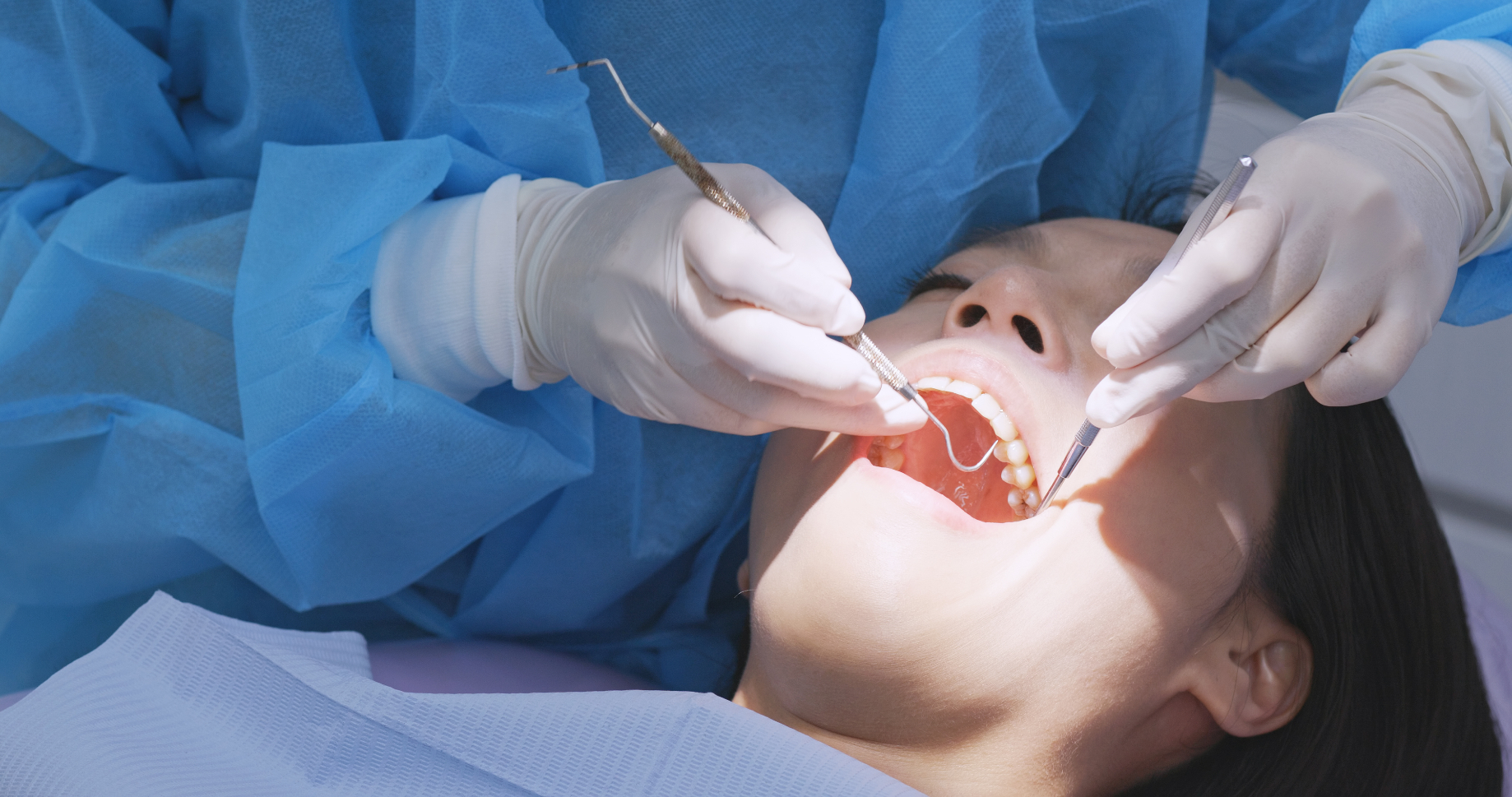
Polishing
Airflow™ is a premium Swiss-made teeth cleaning system. It uses air, water and sodium bicarbonate powder to thoroughly cleanse and polish your pearly whites. It is our preferred method of polishing teeth because it:
- Cleans more thoroughly
- Is less abrasive
- Cleans off plaque and stains quickly and painlessly – even for areas which are difficult to reach!
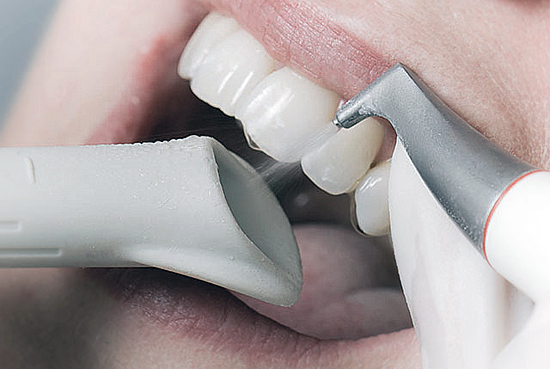
Conventional cup polishing is an alternative method for polishing teeth. It uses a rotary rubber cup and a paste to polish your teeth. In view of the ongoing COVID-19 pandemic, we have temporarily switched to using conventional cup polishing as our default method. This is in order to reduce aerosol generation.
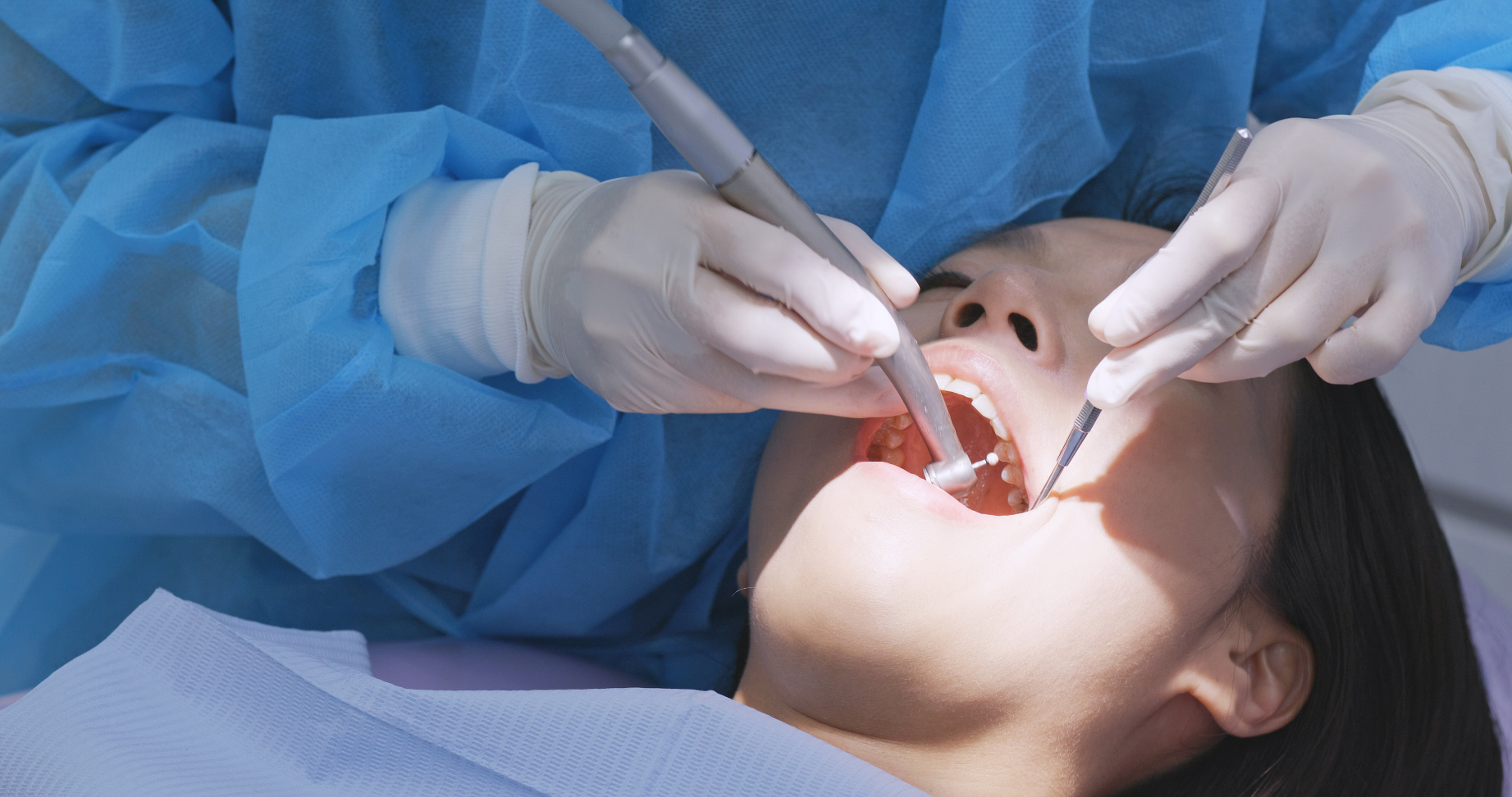
How Often Should I Go for Teeth Cleaning?
Most dentists recommend regular teeth cleaning at least every 6 months to prevent tooth decay, gum disease and bad breath.
Some people are at higher risk of oral hygiene issues. Diabetics, smokers, and braces patients are all more susceptible to tooth decay, gum disease and other dental problems. Orthodontic braces trap food easily, making their wearers especially prone to developing plaque, tartar and dental cavities. For at risk populations, experts recommend professional cleans every 4 months to maintain good oral health.

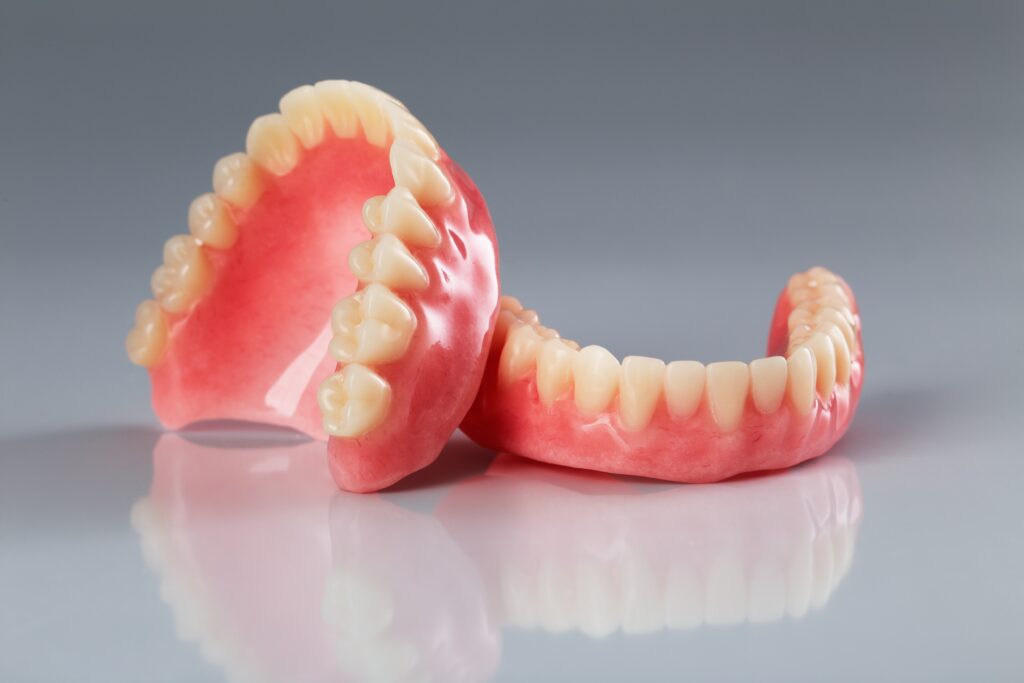 Acrylic dentures
Acrylic dentures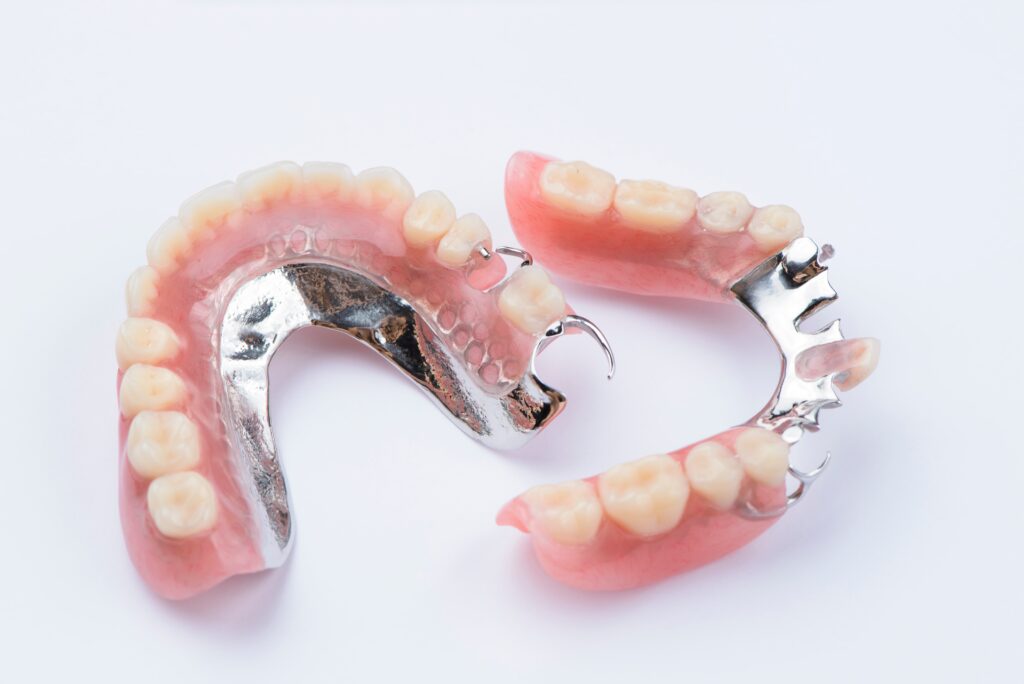 Cobalt Chrome dentures
Cobalt Chrome dentures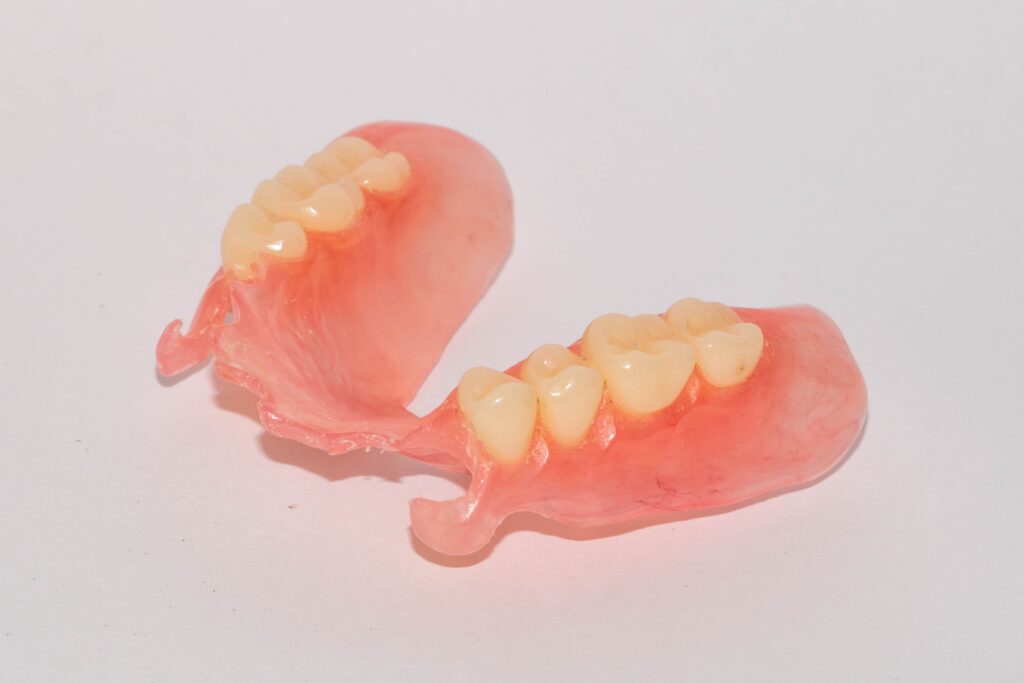 Flexible Denture
Flexible Denture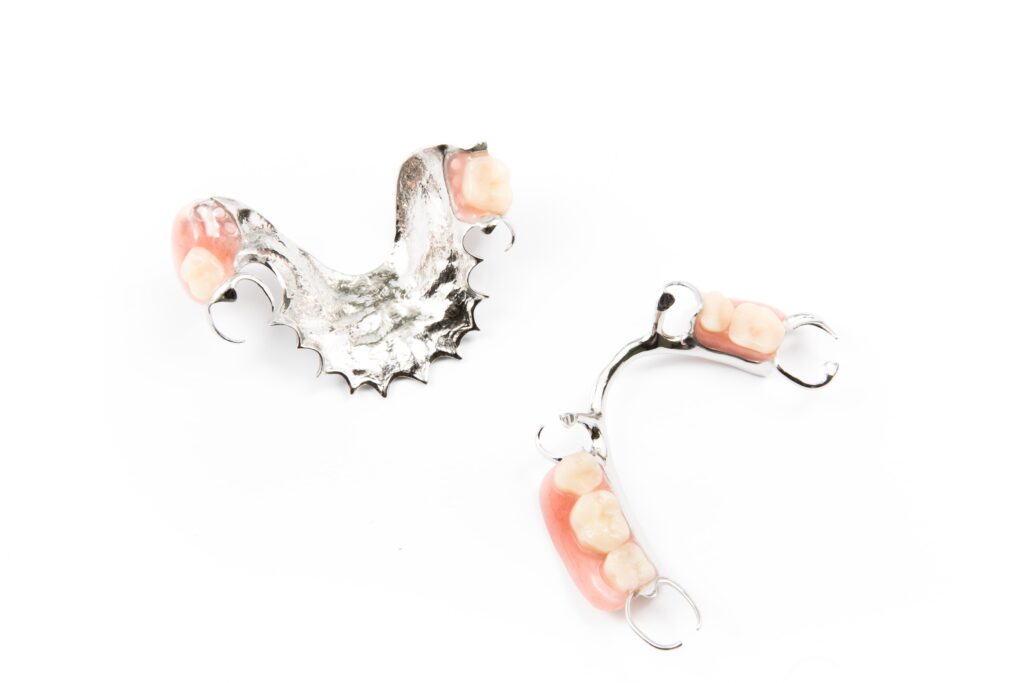 Partial denture
Partial denture